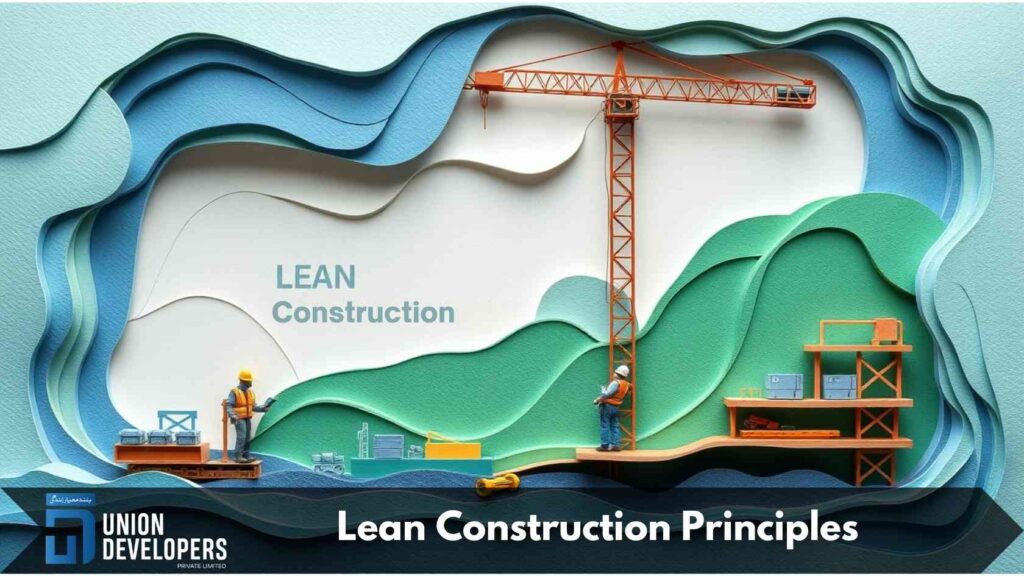Lean construction is a method focusing on collaborating and maximizing stakeholder value while minimizing waste. This term is derived from lean production, and the goal of this relationship-based approach is to increase productivity, innovation, and the profit resulting from a construction project.
This lean philosophy has its origins in the production of the Ford Model T in the early 1900s, but Toyota and its production system pioneered it after the Second World War. The success of the likes of Toyota led to the adoption of lean production in other capacities, with the construction sector being just one of many that replicated this approach. This lean practice has been adopted by companies across industries like printing, retail, and customer service.
Six Lean Construction Principles

Let’s discuss the six core principles of the lean construction model.
1. Identifying Value
A traditional construction approach satisfies the requirements of the customers as per specifications and plans. Still, lean construction goes deep into the rationale and reasoning of the project and unites the visions of all the stakeholders involved under common goals. Simply speaking, it goes beyond just delivering the requirements of construction. It delivers value and provides the advice and services necessary throughout the project.
2. Mapping the Value Stream
Lean Construction places significant emphasis on the project’s value. Lean principle’s purpose is to ensure that value is clear for all involved throughout all the processes and stages of the project. This is also known as a value stream and is an essential component of lean thinking.
3. Creating Flow
In this lean construction model, ‘flow’ is explained as how work progresses throughout the system. For example, projects move consistently from one task to another without delays or interruption, or are there any stops or starts in the process? The flow of the construction process can be positive and negative, with the aim being for work to progress through each stage as smoothly. The flow of lean construction is impacted by both intangible and physical factors, as well as internal and external influences.
4. Using a Pull System
Pull systems are used in the lean construction concept to link product and output to customer needs and eliminate the creation of waste. It works on the principle that if it is not requested, then it shouldn’t be produced by anyone upstream.
5. Reducing Waste of Materials and Productivity
As a concept centered around efficiency, one of the primary goals of lean construction is the elimination of waste. The built environment is a major contributor to global waste. Adopting lean construction principles will help the companies reduce these types of waste.
- Defective components and materials
- Underproduction or overproduction
- Materials that aren’t required at the moment.
- Unnecessary transportation.
With the physical and environmental waste, lean construction also considers wasters in efficiency and working hours by minimizing delays and waiting times and unnecessary and overprocessing features.
6. Continuous Improvement
While the above principles of lean construction can have a huge impact on the operations of the organization, profit, and productivity, they will not be useful if not applied consistently and implemented throughout the corporate culture of a construction company.
The lean construction approach is not static, and it requires continuous and constant monitoring and implementation to identify opportunities for improvement. It is a never-ending process, and learnings from all the construction experiences are applied to future projects to encourage continuous improvement and optimize performance.
Why Should Businesses Go for Lean Construction?

Improvement in Site Safety
Construction is an industry with significant health and safety risks. While training and awareness have improved, there are still incidents of injuries and mishaps every year. As the concept centres around clear communication and smooth coordination, lean construction can improve the onsite safety of employees by creating a safer work environment. This approach can help to keep the construction firms safe and encourage monitoring and promoting risk management.
Reduced Cost of Projects
Due to the lean construction concept of flow and waste reduction, it can reduce the costs of team projects. Moreover, by improving the flow of the construction project, the companies can prevent delays in their delivery. This will help the companies to reduce any extra overscheduled costs.
Improved Sustainability
Adopting lean construction practices can assist the industry in addressing its role in the climate crisis as well. Reducing harmful waste is a crucial principle of lean construction, and the focus on continuously monitoring for opportunities, improving collaboration, and producing what is required will help improve the environment.
Higher Quality Output
Through reduced overproduction, great efficiency, and optimized continuous workflows, lean thinking can help improve the overall quality of a firm’s output and the components and materials all the way to the final finished product.
Better Project Management
When we come to construction management, it is more stressful and requires the right approach and expertise. Construction sites are tougher to handle and manage as compared to other workplaces. Lean construction principles give direction to resolve construction issues and challenges more efficiently.
Faster Project Turnarounds
Time is money, and in construction projects, it can create a multitude of problems, including increased costs. By focusing on great collaboration and minimising construction waste, it can help the project team reduce time and turn their project faster.
Improved client satisfaction and employee satisfaction
Values are the top priority in this lean principle, and the outcomes for customers and stakeholders are the major attributes of this approach. The company must follow an approach to work and complete the construction projects. This approach not only helps the company to streamline smoothly but also helps to satisfy customers and all stakeholders with impressive results.
Conclusion
Construction is not an easy field; it gives stress and multiple challenges throughout the journey. The company, management, and employees should adopt a lean construction approach to produce better outcomes not only for them but for the environment as well. Many construction companies only focus on their results and their deadlines, but environmental responsibility is also equally important. Sustainability is not just a trend but also a responsibility of everyone.





